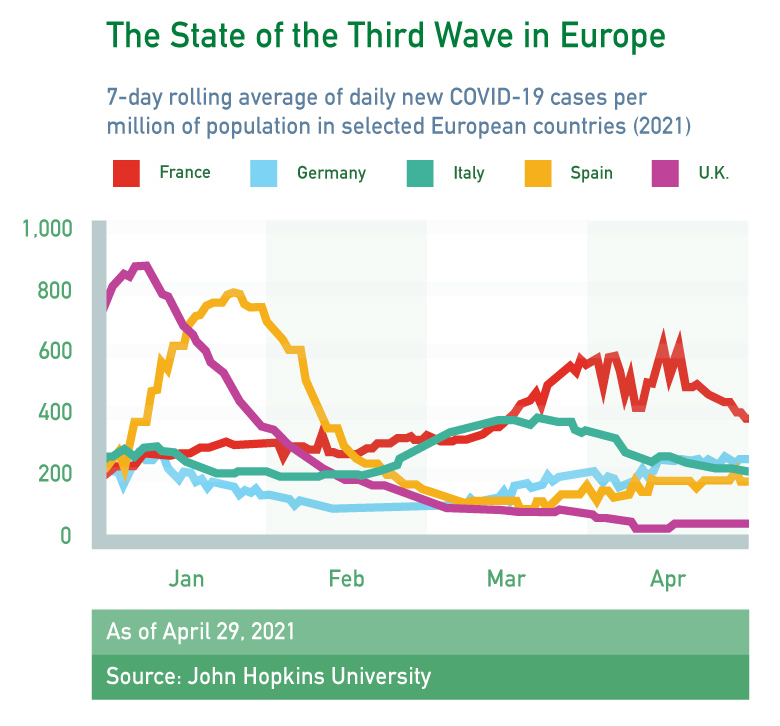
Describe trends
時間経過に伴う変化の説明に取り組みます。
Look at the graph below. Tell your teacher about the trends that you see.

This lesson is about describing change over time. What language do you tend to use to do that?
A. Verbs to describe trends
These verbs describe trends.
- Up: increase, go up, grow, improve, rise.
- Down: decrease, go down, decline, fall, dip (go down a little).
- Up a lot: double/triple/etc., jump, rocket, shoot up, soar, surge.
- Down a lot: drop, halve, plummet, plunge.
- Consistent over time: plateau, stabilize, remain.
Can you think of others?
Pick one verb from each section. Use it to describe January in the graph, above.
B. Adverbs to describe size or speed of changes
Adverbs modify verbs. Use them to describe the size or speed of changes.
Let's start with the size of the change.
- Big: dramatically, significantly.
- Medium: moderately, somewhat.
- Small: marginally, negligibly.
Now, let's look at the speed of the change.
- Fast: sharply, quickly, rapidly.
- Slow: slowly, slightly.
- Consistent over time: gradually, steadily.
Recall the examples you gave in section A. Can you use adverbs in those sentences?
C. Adjectives and nouns to describe change
Adjectives and nouns can also be used to describe change. Verbs can usually be changed to their noun forms (e.g., "to rise" → "a rise"), and adverbs can become adjectives (e.g., "dramatically" → "dramatic"). Adjectives are used to modify nouns.
Adjectives:
- Bigger/Faster: dramatic, significant, sharp, quick, rapid.
- Medium/More slowly: moderate, gradual.
- Smaller: negligible, slight, slow.
- Consistent over time: gradual, steady.
Nouns:
- Up: an increase, a rise, an improvement, a surge, a jump.
- Down: a decline, a fall, a dip, a plunge.
- Consistent over time: a plateau, a stabilization.
Note that when you use a noun or adjective, the sentence structure changes. To learn the difference, finish the incomplete sentences with a verb vs. a noun or adjective. (The first example has been completed for you.)
| Verb/ADVERB | Adjective/Noun | ||
|---|---|---|---|
| to rise | In France, the number of cases rose from February to March. | a rise | There was a rise in the number of cases in France. |
| dramatically | In Spain, cases... | dramatic | In Spain, there was a... |
| to fluctuate | In France... | fluctuation | There was a lot of... |
| slightly | From January to April, in Germany, cases... | slight | There was a... |
| to increase [+ adverb] | In France, in March... | a/an [adjective] increase | In France, in March... |
| to plateau | Cases plateaued... | a plateau | ... |
Look at the graph above again.
You have 2 minutes to describe as many trends as you can. Use the words and phrases from the Language section. Your teacher will time you.
NOTE: The GCAS has time-limited answers. So once you decide what you want to say, it's important to make sure your ideas fit into the time limit.